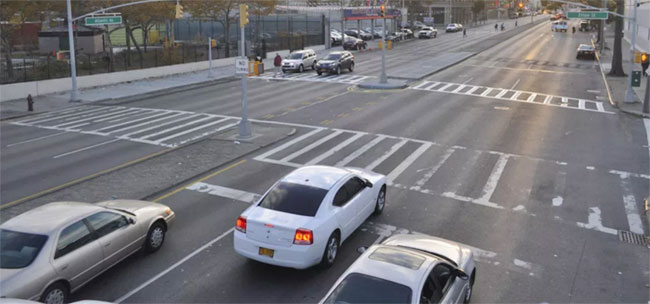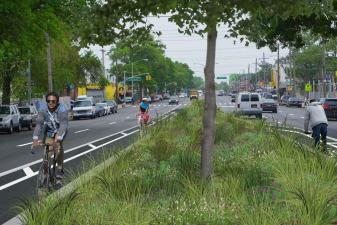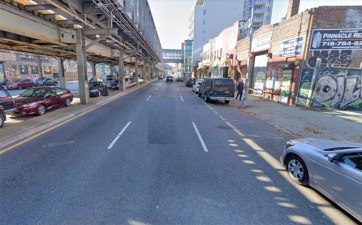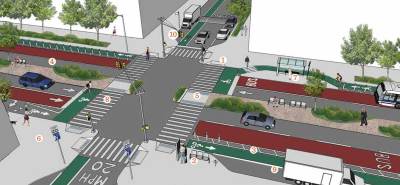DOT’s Atlantic Ave Plan Doesn’t Do Enough to Protect New Yorkers

The de Blasio administration and NYC DOT are not doing enough to protect people from life-threatening conditions on Atlantic Avenue, Transportation Alternatives says in a new report [PDF]. The design changes currently on the table are too meager and don’t cover sufficient territory to tame the 10-mile long street.
While 58 percent of households near Atlantic Avenue are car-free, the street is designed as a speedway for motor vehicles, forcing humans to the margins. An average of 800 people are injured in crashes on Atlantic every year, and 26 people have been killed on the street since 2012, according to TA, making it one of the most dangerous streets in Brooklyn for walking, biking, and driving.
Atlantic is among four large streets selected for safety fixes via the de Blasio administration’s “Vision Zero Great Streets” program.
The first phase of planned DOT fixes covers a two-mile segment from Pennsylvania Avenue to Rockaway Parkway. But the changes currently planned for this section don’t fundamentally alter the geometry of the streets. Alterations like beefed-up medians will have only a “marginal impact on improving safety,” TA says:
Many of these interventions are designed to protect pedestrians from dangerous drivers, instead of implementing changes that would fundamentally alter dangerous driving behavior, such as protected bike lanes, widened sidewalks and medians, decreased traffic lane width and other complete street innovations.
With de Blasio allocating just $250 million total for improvements to four major streets (Atlantic and Fourth avenues in Brooklyn, Queens Boulevard, and the Grand Concourse), TA notes that the $60 million budgeted for Atlantic Avenue will allow for redesigning just four of its 10 most dangerous intersections.
Without a bolder redesign and action from DOT on the other eight miles, too many New Yorkers will remain exposed to dangerous traffic conditions.




